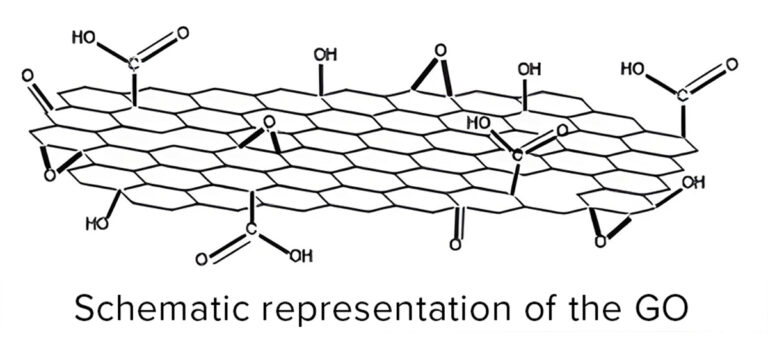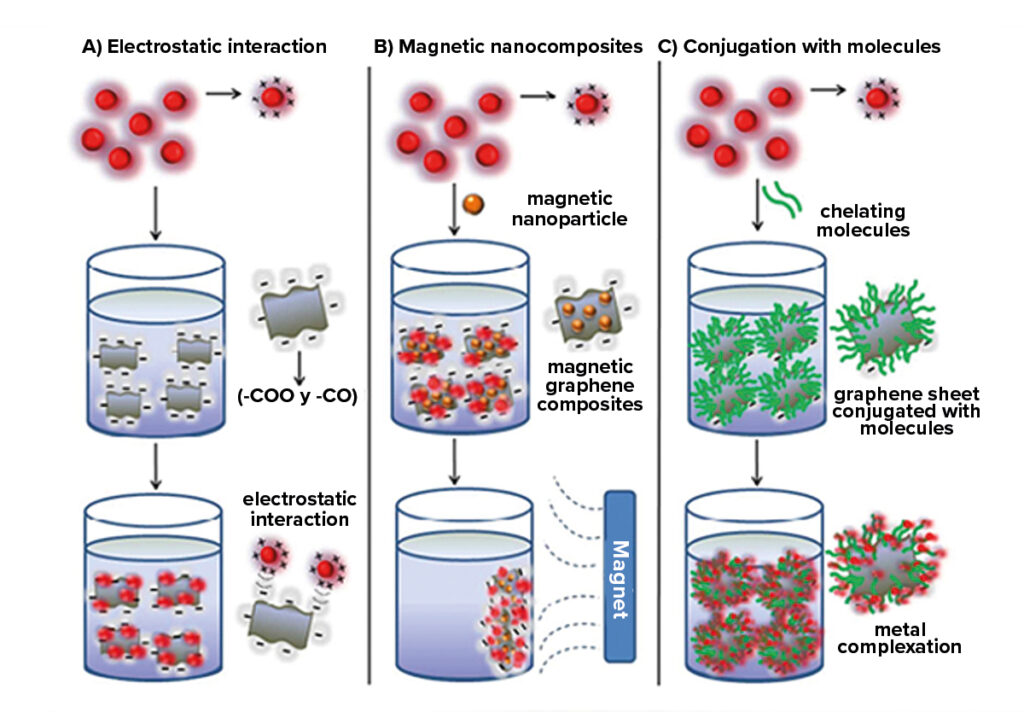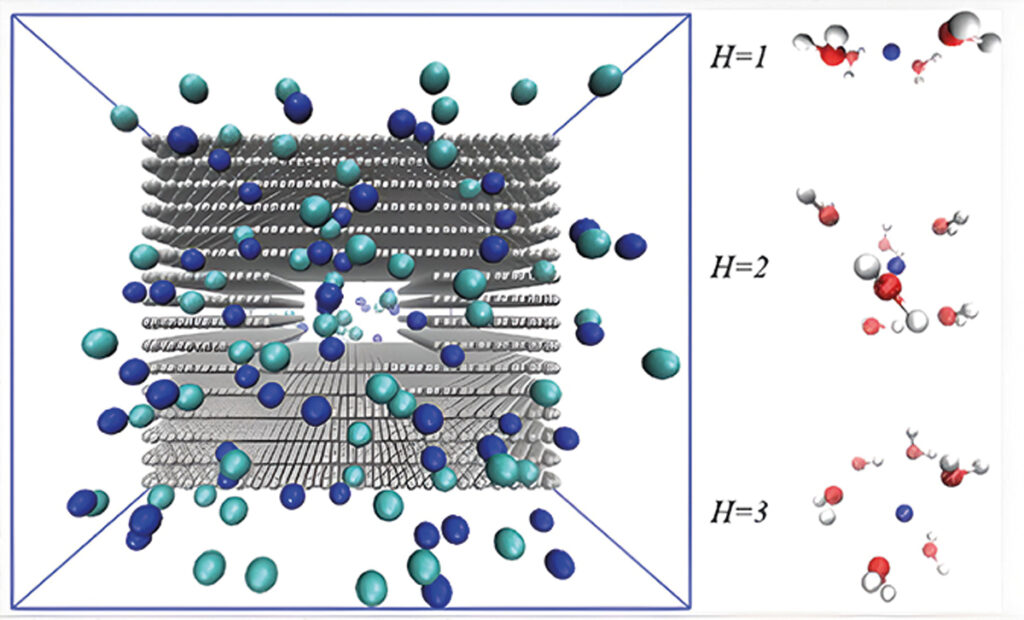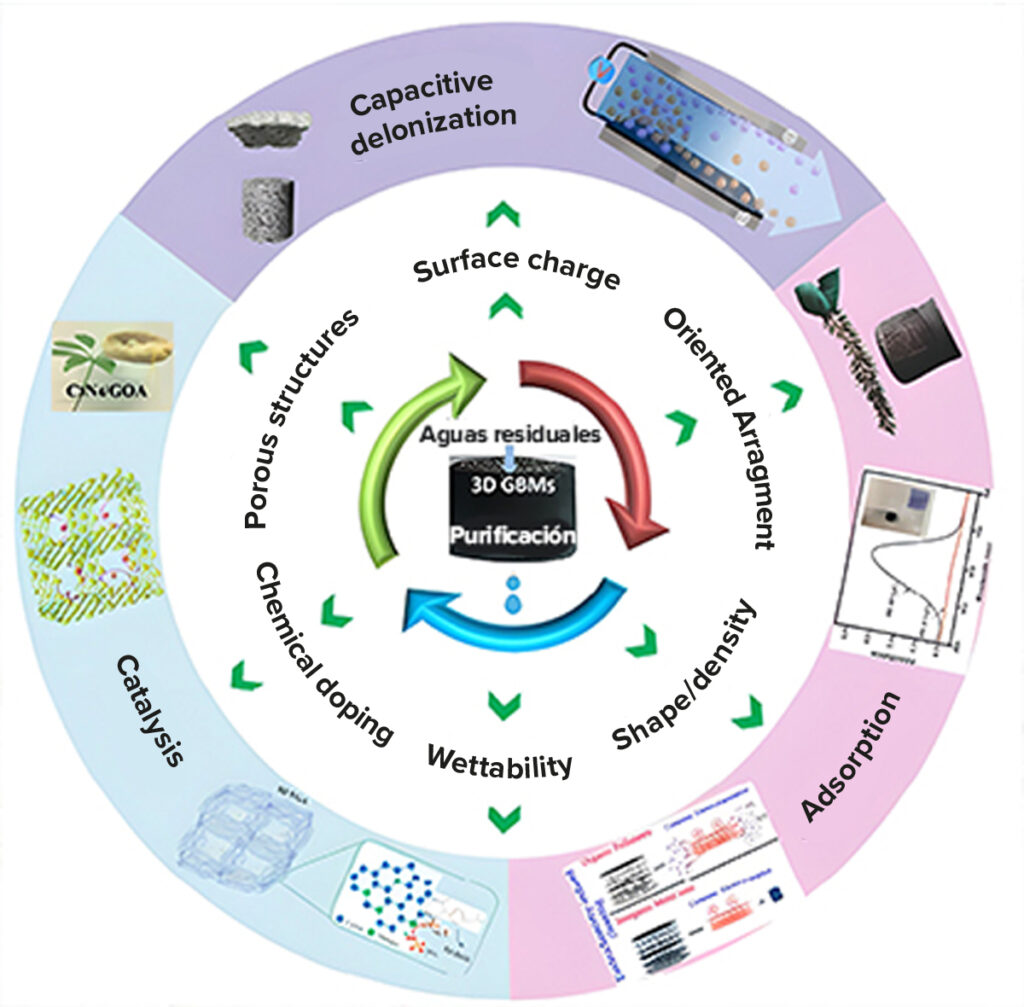Use of Graphene for the Purification and/or Desalination of Water

Graphene materials, that is, Graphene, Graphene Oxide (GO) and Reduced Graphene Oxide (rGO), are carbon nanostructures that, thanks to their size, area, and surface chemistry, allow the design o new three-dimensional and multifunctional materials with high probabilities. to solve the problems associated with water scarcity.

For example, they are potential coagulant/flocculating agents, this is because they have a large surface area along which there are multiple anchor points capable of capturing a large amount of organic and inorganic matter, that is, they are highly useful for the capture of contaminants.

Taken from Environ. Sci. Technol., 2012, 46, 7717.
They are also chemically inert and by being immobilized in a substrate they prevent organic matter from adhering to surfaces. This property, when implemented in membrane technology, would allow a flow of water almost without friction, in other words, the use of graphene materials could make the flow of water remain constant for longer and therefore provide greater energy efficiency.
Likewise, their nanometric size, the arrangement of their sheets and the presence of millions of nanochannels between them make them highly impermeable, acting as a filter for molecules or contaminants.

Taken from J. Phys. Chem. C 2020, 124, 31, 17320.
Finally, the important antimicrobial and photocatalytic properties of graphene and its derivatives, in addition to reducing the microbial load by taking advantage of sunlight, would also help to reduce the requirements for biocidal agents.

Taken from Gels 2022, 8, 622.
The identification, understanding and use of the properties of graphene for the development of real products has not been an easy task. However, on November 3, 2022, the Graphene flagship, the multidisciplinary project in which almost 10 years ago the European Commission invested 1,000 million euros for Graphene research, announced the results of the Graphil Project, which consisted of the development of a new polysulfone filter with Graphene Oxide that acts as a more efficient mechanical network to trap polluting particles such as heavy metals, antibiotics, viruses, bacteria, toxins, etc., while allowing the passage of clean and safe water.
For its part, Energeia-Graphenemex®, the pioneering Mexican company in Latin America in the research and development of applications with graphene materials, in collaboration with other companies and research centers, joins this search for strategies to improve the availability and quality of water through the use of graphene, hoping in the short term to have all these benefits available to society.
References:
- Yu Z, Wei L, Lu L, Shen Y, Zhang Y, Wang J, Tan X. Structural Manipulation of 3D Graphene-Based Macrostructures for Water Purification. Gels. 2022, 29; 8(10):622.
- Alessandro Kovtun, Antonio Bianchi, Massimo Zambianchi, Cristian Bettini, Franco Corticelli Giampiero Ruani, Letizia Bocchi,Francesco Stante,Massimo Gazzano, Tainah Dorina Marforio, Matteo Calvaresi, Matteo Minelli,Maria Luisa Navacchia, Vincenzo Palermo and Manuela Melucci. Core–shell graphene oxide– polymer hollow fibers as water filters with enhanced performance and selectivity. Faraday Discuss., 2021, 227, 274.
- Sebastiano Mantovani,Sara Khaliha, Laura Favaretto, Cristian Bettini,Antonio Bianchi, Alessandro Kovtun, Massimo Zambianchi, Massimo Gazzano, Barbara Casentini, Vincenzo Palermo and Manuela Melucci. Scalable synthesis and purification of functionalized graphene nanosheets for water remediation. Chem. Commun., 2021, 57, 3765
- Sara Khaliha, Tainah D. Marforio, Alessandro Kovtun, Sebastiano Mantovani, Antonio Bianchi, Maria Luisa Navacchia, Massimo Zambianchi, Letizia Bocchi. Nicoals Boulanger. Artem Iakunkov, Matteo Calvaresi, Alexandr V. Talyzin, Vincenzo Palermo, Manuela Melucci. Defective graphene nanosheets for drinking water purification: Adsorption mechanism, performance, and recovery. FlatChem., 2021, 29 100283.
- Yunzhen Zhao, Decai Huang, Jiaye Su, and Shiwu Gao. Coupled Transport of Water and Ions through Graphene Nanochannels. J. Phys. Chem. C 2020, 124, 31, 17320
- F. Guo, G. Silverberg, S. Bowers, S.-P. Kim, D. Datta, V. Shenoy and R. H. Hurt, Environmental Applications of Graphene-Based Nanomaterials. Environ. Sci. Technol., 2012, 46, 7717
- https://graphene-flagship.eu/graphene/news/graphene-applications-graphil/

